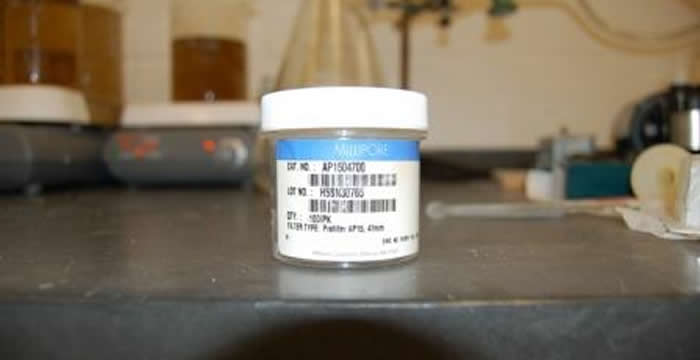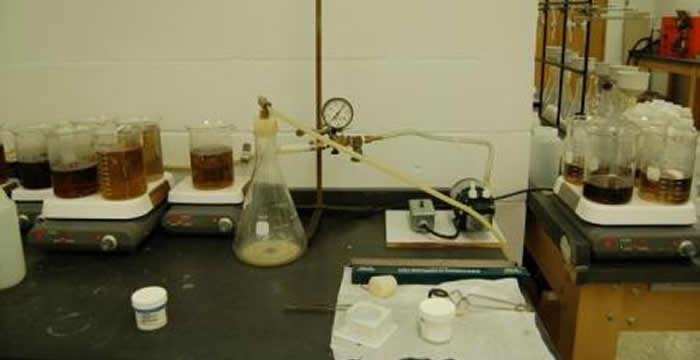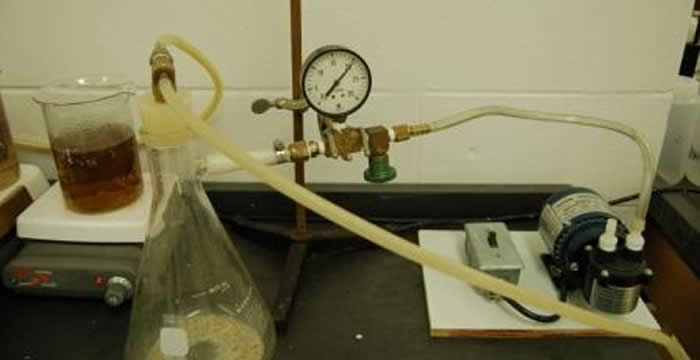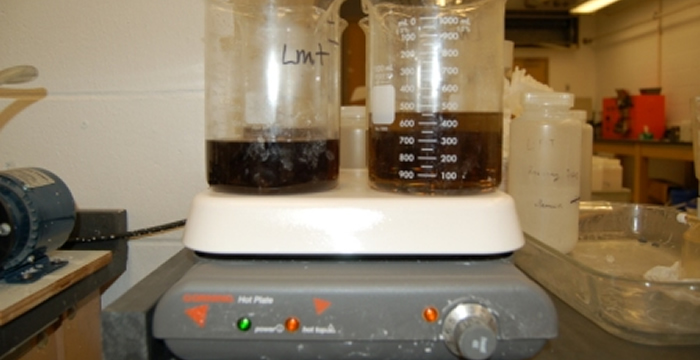Heavy Liquid Cleaning
Heavy liquid cleaning saves money, time and resouces. Without reusing LST (PDF), each liter used would cost around $800. Heavy liquids must be cleaned so that each sample does not cross contaiminate with other samples.
Procedure
Note: Never leave a hot plate turned on overnight. Do not allow the heavy liquid to boil, or to develop a thick film on the surface, or to dry to a cake.
- Replace the filter in the plastic filter jar.
- Pour the dirty heavy liquid into the funnel part of the jar.
- Connect a vacuum pump to the filter jar. Cover the other opening of the jar, and turn on the pump. Wait until all of the heavy liquid is pulled into the bottom part of the jar.
- Pour the filtered heavy liquid into a 1 L beaker with a piece of labradorite, and a magnetic stirring bar. Place the beaker on a hot plate and turn on the heat to level 4 if using LST (PDF) and level 3 if using LST (PDF). Some experimentation with the settings will be needed. The liquid should be stirred fairly vigorously. If you leave the room, turn down the heat.
- Check the beaker often. Do not over heat liquids! Over heating and or drying the heavy liquid will result in several hours of extra work, bringing the baked LST (PDF) cake back to a clean liquid form. When the labradorite floats the liquid should be removed immediately and filtered. Filtering of the heavy liquids is easier while the liquid is hot.
- If the LST (PDF) becomes black or blue, add .10 ml of hydrogen peroxide (H2O2). The color will lighten in a few hours or overnight. If the LST (PDF) becomes discolored, add only one drop H2O2.
- A hydrometer is needed to achieve the proper density.




